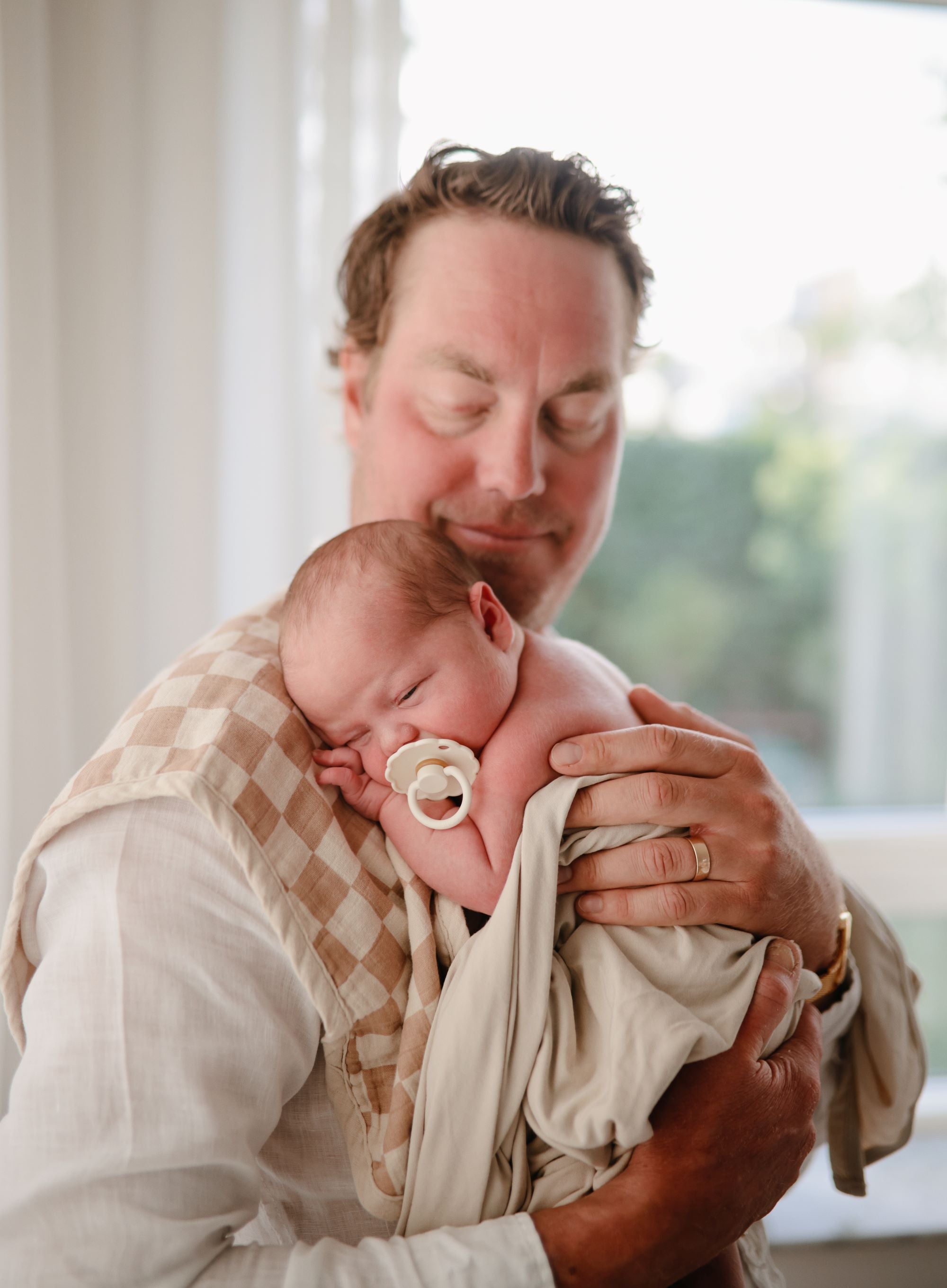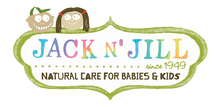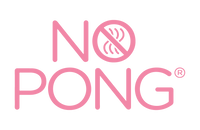- What is white noise?
- Why do we love white noise or sound machines for babies and toddlers to sleep so much?
- How do sound machines help babies sleep?
- Is white noise bad for babies or toddlers? Should I be worried about using a sound machine?
- Can we use pink noise, brown noise, or other sounds instead of specifically selecting white noise?
- How loud should a sound machine or white noise be for a baby? What decibel level is safe for a baby?
- How can I make sure my baby sound machine isn't too loud?
- How far should the sound machine be placed from the baby?
- When and how do I stop using white noise, pink noise, or brown noise for my baby?
- How do I choose the best sound machine for my baby?
This blog covers the most common questions we hear about sound machines for babies and toddlers, including the research around white noise, how to use white noise for newborns, how loud white noise is safe for babies, safe decibel levels for babies, and more.
Spoiler Alert: According to a recent statement and research from the AAP, sound machines help babies and young children sleep. When used correctly, they are safe.
What is White Noise?
Technically, white noise is a sound made from a combination of different frequencies. However, most people use the term white noise to describe a consistent sound used for relaxation or sleep, such as static, a “shhh” sound, a hum, or a fan. In this blog, I will refer to white noise in general (i.e. using a sound machine on a constant setting).
Why We Love White Noise or Sound Machines for Baby and Toddler Sleep?
Sound machines are a great tool to help babies and toddlers sleep. Research shows that using a sound machine on a constant setting can:
- calming a fussy baby
- help baby fall asleep faster
- help baby sleep longer
How Do Sound Machines Help Babies Sleep?
Using white noise can be very soothing and can make a big difference in your baby’s sleep. For babies, especially newborns, silence can feel uncomfortable or strange. They are not used to silence because it was never quiet in the womb. In the womb, babies sleep to the sounds of their heartbeat, blood flowing through the placenta, food digesting (yes, that sounds a bit gross), and more. The constant sound of a sound machine mimics the familiar environment of the womb, which is very soothing for very young babies.
Using a sound machine can also prevent environmental noise from disturbing your baby's sleep.
Environmental noise is the sounds of busy life, especially sounds such as transportation, yard care, technology, etc. According to a recent statement from the American Academy of Pediatrics (AAP), environmental noise is the leading cause of sleep disturbance in children, and this sleep disturbance has a negative effect on “daytime alertness, performance, quality of life, and overall health.”
Sound machines can help with this problem by masking these environmental noises, making it easier for babies to fall asleep and stay asleep.
Is White Noise Harmful to Babies or Toddlers? Should I Be Worried About Using a Sound Machine?
White noise is safe for babies when used correctly. There are some studies that suggest that if white noise is too loud for too long, it can be potentially harmful. But, there’s no need to panic and throw away the sound machine. If you follow the guidelines, white noise is still safe.
Here are the American Academy of Pediatrics guidelines for safely using white noise or sound machines:
- Place the sound machine at least 2 meters from the crib.
- Use the lowest volume that works. (You can even lower the volume after your baby falls asleep.)
- Turn off the sound machine when the baby is awake.
When used correctly, white noise and sound machines are safe for babies to use, and studies show that they are beneficial for sleep. You may come across blogs or news articles that say “sound machines are bad for child development” or that “white noise can cause hearing loss.”
What we can say is that we have studied the research, researched the latest policy statement from the American Academy of Pediatrics, and consulted with speech-language pathologists and pediatric audiologists regarding the use of sound machines for infant and child sleep.
Let's discuss these concerns and how safe use of sound machines can prevent these problems:
Concern #1: Some people worry that sound machines can cause hearing loss.
What the research says: Long-term exposure to loud noises can cause hearing loss, which in turn can affect speech and language development. This is a growing concern, especially with increasing environmental noise and the use of personal listening devices (such as headphones with iPads). However, there is no evidence that white noise machines, when used according to AAP safety guidelines, can cause hearing loss.
Concern #2: Some people worry that sound machines can cause speech delays.
What the research says: When a child is constantly exposed to loud sounds (loud TV, ambient noise, etc.) throughout the day, this can affect their speech and language learning because they don’t have the opportunity to hear adult language properly throughout the day. To prevent this problem with sound machines, we only use the sound machine at bedtime (at a safe volume) and turn it off during waking hours. This way, our children have enough exposure to adult language that they need to develop their language skills.
Concern #3: Some people worry that sound machines can cause auditory processing disorders. (How the brain understands the sounds it hears.)
What the research says: There is no evidence that white noise used for sleep has any negative effects on auditory processing. There is an often-referenced study where rats were exposed to continuous white noise 24 hours a day, and it is often misunderstood. We don’t do that. We use white noise only for sleep, then expose them to language, communication, and natural sounds during waking hours. So you see the difference? This study looked at 24/7 white noise, not white noise used only during sleep.
Concern #4: Some people worry that sound machines put babies and toddlers into “fight or flight” mode.
What the research says: “Fight or flight” is the body’s response when it senses danger or stress. Things like sudden noises or prolonged exposure to excessive noise (dropping something in the house, airplanes flying overhead, car doors slamming, heavy traffic outside the window, etc.) can cause our bodies to activate this “fight or flight” response. When you use a sound machine at bedtime, you protect your baby or toddler from sudden loud noises by creating a safe, consistent sound barrier. When used correctly, there is no indication that sound machines cause this fight or flight response throughout the night.
Please know that if research says we should stop using sound machines, we will immediately advise parents to stop using them.
We continue to follow the latest research and listen to experts in the field, and the evidence so far does not suggest that white noise (when used within safety guidelines) poses a risk to babies. If you are concerned, check with your doctor and research the research yourself, but right now, the evidence is that sound machines used correctly help babies sleep and are safe.
Can We Use Pink Noise, Brown Noise, or Other Sounds Besides White Noise?
Yes of course!
Have you ever heard of pink noise or brown noise? White noise, pink noise, and brown noise are all consistent sounds that can be used for relaxation. Remember, white noise is a combination of different frequencies mixed together evenly. Pink noise dampens high frequencies a little; brown noise dampens high frequencies even more, resulting in a much deeper sound.
Confused? The point is to try what you find most interesting. Any sound of any color can produce the calming effect we seek.
Fun Fact: You may be surprised to learn that many white noise machines actually produce pink noise or brown noise. If you’ve used a sound machine before, you may have been using a “color” of sound that isn’t technically white noise without even realizing it. Again, any color of sound can help you sleep. If it sounds soothing to you, it’s a good choice!
How Loud Should a Sound Machine or White Noise Be for My Baby? What Decibel Level is Safe for Babies?
The American Academy of Pediatrics (AAP) recommends that in hospital baby rooms, sound machines be kept at 50 dB or lower. The CDC also recommends that a safe decibel level for infants means keeping the volume below 60 dB.
We want to use the lowest decibel level that is effective for your baby’s sleep. The goal is to have the white noise loud enough to block out additional sounds that might wake your baby, without being so loud that it hurts your little one’s ears. In simple terms, this is about the volume of running water from a shower.
Think about it: If you stand in the shower with the water running, the noise from outside won't bother you. However, the sound of the shower won't hurt your ears, and you won't have to raise your voice to talk to someone standing just an arm's length away.
How Do I Make Sure My Baby Sound Machine Isn't Too Loud?
You can test the decibel level by using a decibel meter app on your phone (There are plenty of free ones available on Google Play; check out this one for iOS or this one for Android). Simply turn on the sound machine, and place your phone inside your baby’s crib to get an accurate reading of the decibel level. Keep in mind that decibel meter apps may not always be accurate or consistent.
Here’s an easy way to make sure the sound machine volume is at a safe level: Turn on the sound machine, and stand near your child’s bed. When you’re about an arm’s length away from the other person, can you have a normal conversation without having to raise your voice? If so, you’ve done it. Your child’s sound machine volume is at a safe level.
Our tip: Some families have noisy homes and find that a sound machine with a safe decibel level isn’t enough to block out household noises. We’ve got a trick for you! Place an additional sound machine outside the baby’s room door. The idea isn’t to create louder white noise, but rather to create an additional sound barrier between your baby and household sounds.
How Far Should a Sound Machine Be Placed from a Baby?
The latest recommendation from the American Academy of Pediatrics (AAP) is that sound machines should be placed at least 6 feet away from your child's head.
Try placing the sound machine between your child and the source of the noise. For example, place the sound machine between your baby's crib and a window to block out outside noise, or if you have twins, place the sound machine between their two beds.
When and How to Stop Using White Noise, Pink Noise, or Brown Noise for Babies?
There is really no reason to stop using white noise , pink noise , or brown noise for your little one to sleep. Research shows that using a sound machine for sleep has benefits far beyond infancy, even into adulthood. I still use a sound machine myself because my neighborhood is close to a major highway!
However, if you decide you want to stop using the sound machine to put your little one to sleep, you have two options:
- Gradually: Simply lower the volume on your child's sound machine every few nights until it is so low that it is barely audible.
- Cold Turkey: You can choose to stop using the sound machine one night and see how your little one’s sleep goes throughout the night! If you find that your child’s sleep is being disrupted, it’s okay to switch to a gradual method.
How to Choose the Best Sound Machine for My Baby?
There are a few things to consider when choosing a sound machine for your baby. Look for a sound machine that has:
- Continuous sound: Look for a sound machine with continuous sound rather than one with a timer that turns the sound machine off. (The interruption in sound can cause a baby to wake up.)
- White Noise: Choose a sound machine with continuous white noise, pink noise, or brown noise. (For some babies and toddlers, more varied sounds like ocean waves or heavy rain can be disruptive to sleep.)
- No extra lights: Choose a sound machine with no lights or one that can be turned off. (Lights are very stimulating to babies' brains and can make it harder for them to fall asleep and stay asleep.)
These sound machines are easy to use and produce a selection of soothing sounds. Hushh and Rohm can be plugged in or battery operated, making them convenient for at home, traveling, or napping on the go. They also don’t require an app or a WiFi connection, which can often be spotty in Indonesia.
Some other popular sound machines include:
- White Noise Machine from Amazon: This little sound machine has a variety of sound options, is great for traveling, doesn't require WiFi or Bluetooth, and has an optional night light.
- Amazon Echo Products: All you have to do is say, “Alexa, play brown noise,” and the sound machine is ready to go. Bonus: As your child grows, you can use it to play music, audiobooks, or even as a timer.
If you need more help with sleep, I’m here to help. Whether you have a newborn (0-4 months), infant (5-24 months), or toddler (2-4 years), I can guide you step-by-step with an evidence-based, emotionally connected approach to creating quality sleep.
References
- Sezici and Yigit. (2017). Comparison between swinging and playing of white noise among colicky babies: A paired randomized controlled trial
- Spencer, Moran, and Talbert. (1989). White Noise and Sleep Induction
- Smith et al. (1990). Intrauterine sound levels: intrapartum assessment with an intrauterine microphone
- American Academy of Pediatrics. (2023). Preventing Excessive Noise Exposure in Infants, Children, and Adolescents
- Erickson and Newman. (2018). Influence of background noise on infants and children
- Mzia et al. (2020). Behavioral and neuroanatomical effects on exposure to white noise in rats
- Harvard TH Chan. (2023). Noise pollution can lead to sleep issues, chronic health problems
- Yoga Sleep. (2021). Pink Noise vs. White Noise: What's the Difference, and Why Should You Care?
- American Academy of Pediatrics. (2014). Infant Sleep Machines and Hazardous Sound Pressure Levels
- Center for Disease Control and Prevention. (2022). What Noise Causes Hearing Loss?
- American Academy of Pediatrics. (2023). American Academy of Pediatrics Sounds the Alarm on Excessive Noise and Risks to Children's Hearing in Updated Policy Statement
- Ebben, Yan, and Krieger. (2021). The effects of white noise on sleep and duration in individuals living in a high noise environment in New York City
- Grivas and Savvidou. (2007). Melatonin the “light of night” in human biology and adolescent idiopathic scoliosis
- De Jong et al. (2024). Continuous white noise exposure during sleep and childhood development: A scoping review .






































































































